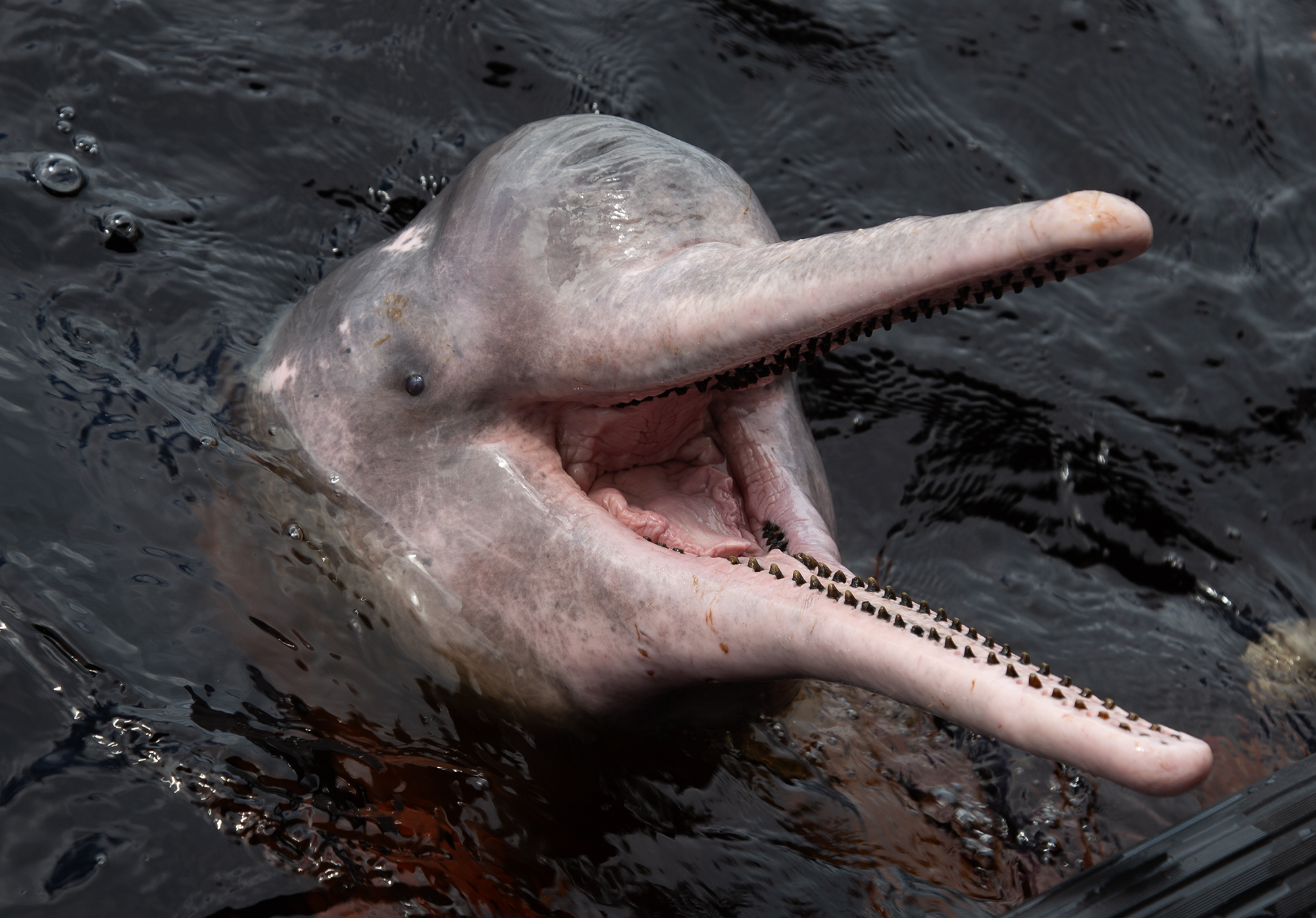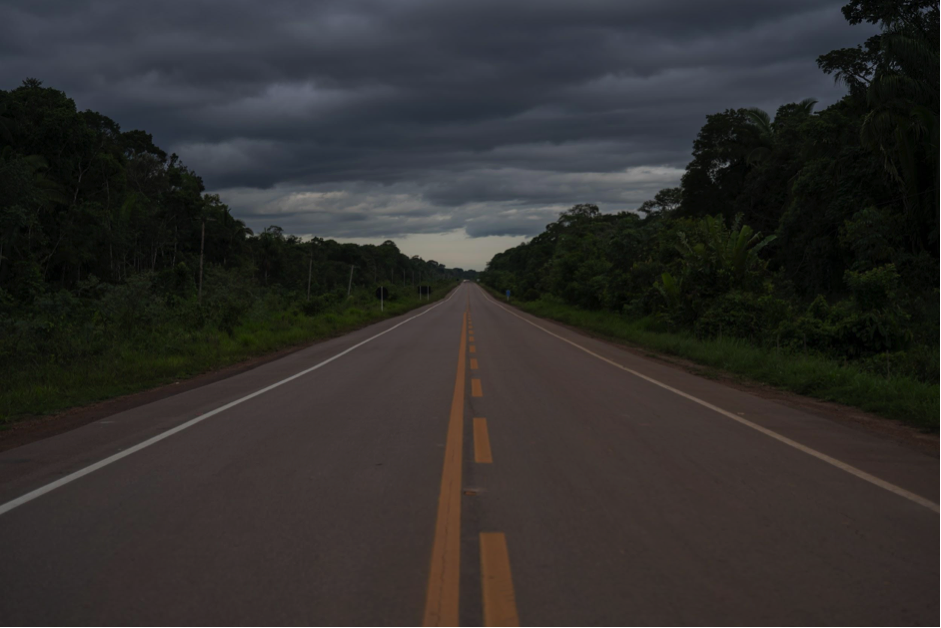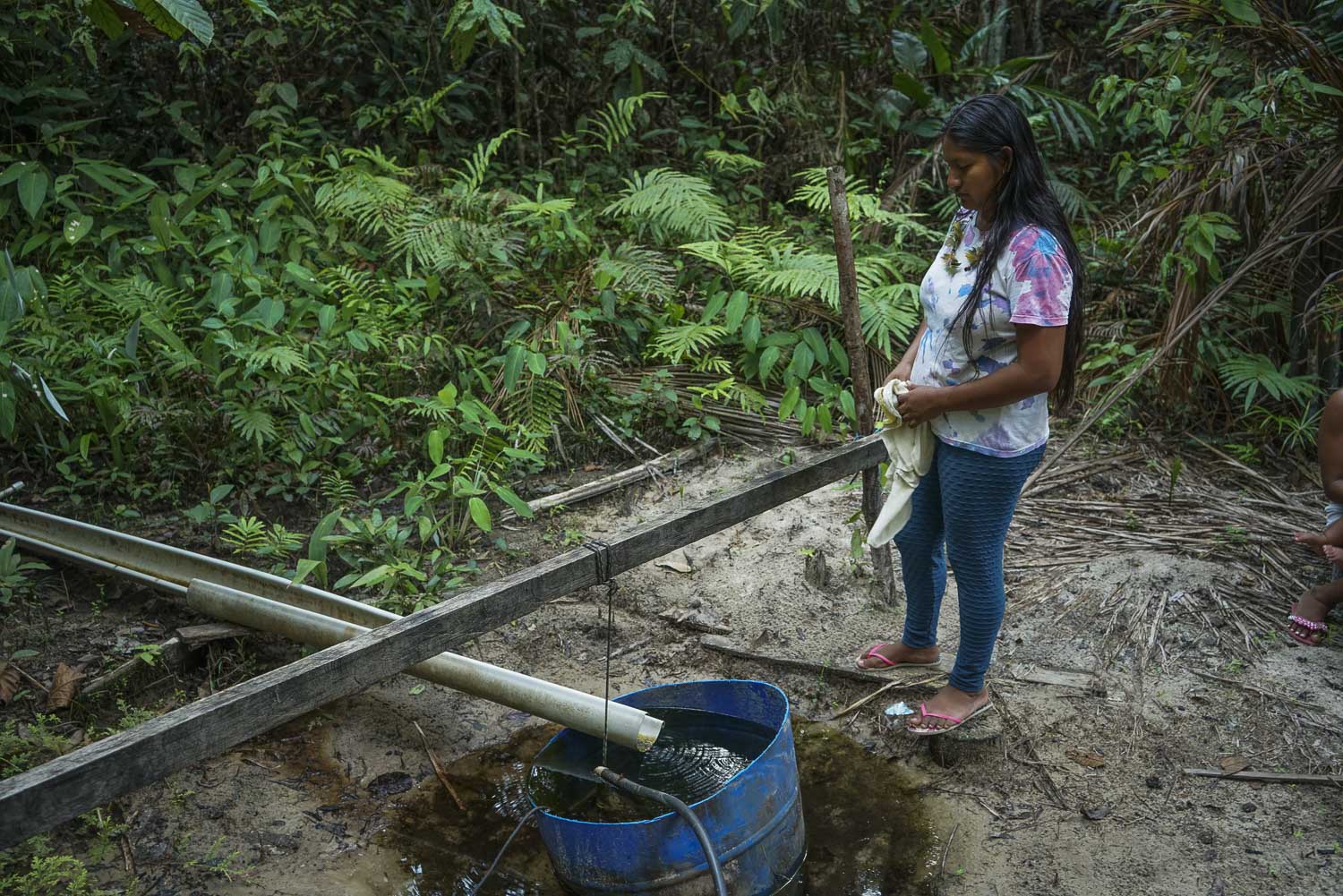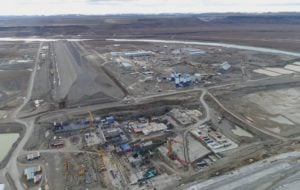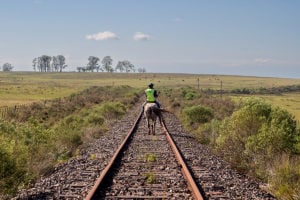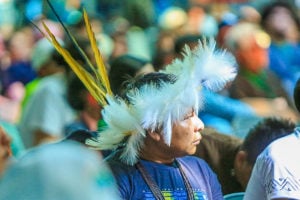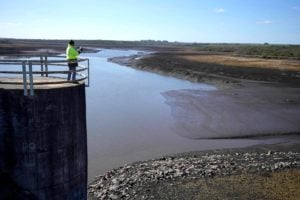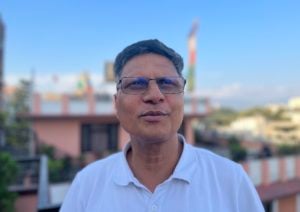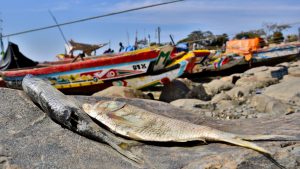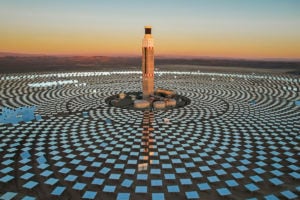For around two months now, a severe drought has been ravaging the west of the Brazilian Amazon and reaching across the border to other South American countries that share the rainforest.
The crisis is most serious in the state of Amazonas, which, although under increasing pressure from illegal deforestation, especially in its southern part, still has the highest proportion of preserved native vegetation and watercourses of any state in Brazil.
But neither the resilience of the forest nor the abundance of water in the Amazon, whose basin is the largest in the world by volume and area, have been able to halt the devastating damage caused by the ongoing drought.
“It’s a catastrophe foretold,” says Luciana Gatti, a researcher at the National Institute for Space Research (Inpe), whose monitoring has shown how the Amazon biome is losing its capacity to produce rain and store carbon as deforestation has progressed.
As rivers across the Amazon basin have recorded historic lows, boats carrying people and commodities have been prevented from reaching their destinations, and Indigenous and riverside communities have been left isolated. The drought, combined with the extreme heat of an abnormally warm South American winter, may have been responsible for the death of more than 170 dolphins in Amazonas – unprecedented in the biome – and has facilitated the spread of fires, the smoke from which has created apocalyptic scenes in the state capital, Manaus.
In one of the planet’s most water- and biodiversity-rich regions, animals and people have died or been left suffering from unhealthy conditions, hunger and thirst. So why has the Amazon been unable to cope with these climate pressures? And what lies ahead?
How intense and rare is this Amazon drought?
Brazil’s Amazon region experiences two seasons a year: the dry and the rainy. Amazonians have grown accustomed to the cyclical nature of fluctuations in river levels. But what is no longer so predictable, according to experts, is the intensity and frequency of dry and wet spells.
Where they used to occur once every two decades, intense droughts are now more regular, according to Carlos Nobre, a climate scientist and researcher at the University of São Paulo, who highlights five similar episodes that have happened since 2005. “Climate change has greatly increased the frequency and severity of these droughts,” he says.
This year’s drought may eclipse the last severe episode in the region. One of the Amazon’s most acute droughts came in 2015 during the dry season between May and October, dragging on into the wet season of the first half of 2016, with rains 50% below expected levels.
Climatologists consulted by Diálogo Chino say they are waiting for the rainy season to arrive in November to assess the extent of this year’s drought. “We still don’t know if this drought will beat the record of 2015 and 2016,” says Nobre. “In some places, it already is, such as in the Negro river basin.”
Last week saw a series of historic lows recorded on the Negro River, which flows from its source in eastern Colombia for more than 2,200 kilometres into the Amazon River at Manaus. On 26 October, its level dropped to 12.7 metres at the port of Manaus, the lowest level measured in 121 years. At the other end of the scale, its record high was set during an unprecedented flood in June 2021, reaching a high of 30.02 metres.
What are the causes of the drought?
Between 2020 and mid-2023, Brazil felt the impacts of La Niña, a climate phenomenon causing an abnormal cooling of the Pacific Ocean, which alters the formation of winds and brings more rain to the Brazilian Amazon. The region is now under the influence of El Niño, the counterpart climate phenomenon that warms these waters, changing the wind distribution and causing droughts stronger than those experienced seasonally.
Simultaneously, the waters of the North Atlantic Ocean have seen unusually high temperatures, bringing dry winds to the Amazon. With the two oceans bordering the Amazon – the Pacific on the west, and the Atlantic on the east – warmer than usual, a drier climate is being driven and putting pressure on the biome.
“These two factors lead to a very pronounced and very long drought,” explains Nobre, who co-authored the thesis that the Amazon is close to its “tipping point”, and that deforestation could lead to the “savannisation” of the rainforest.
This year’s drought is also being intensified by the progressive loss of forests, says Inpe’s Gatti. “The worst thing of all is deforestation, because the forest itself participates in the formation of rainfall,” she says. The regions of the eastern Brazilian Amazon, where the arc of deforestation is advancing, have lost on average 30% of their forest cover, and this stretch, Gatti explains, influences the formation of rainfall on the western side, where the drought is more pronounced.
The worst thing of all is deforestation, because the forest itself participates in the formation of rainfallLuciana Gatti, National Institute for Space Research
After President Luiz Inácio Lula da Silva returned to power this year with plans to reintroduce protections for the Amazon, environmental NGO Imazon reports that deforestation was already three times lower in the first nine months of the year compared to the same period in 2022 under his predecessor Jair Bolsonaro, who encouraged the exploitation of the forest’s natural resources. Despite the reduction, however, deforestation continues at a significant rate, with the equivalent of almost 1,300 football pitches of rainforest disappearing every day this year – higher than pre-2017 levels, the Imazon report notes, during previous administrations of Lula’s Workers’ Party.
What damage has the water crisis done?
In mid-October, a delegation from Brazil’s federal government arrived in Manaus, attempting to explain the cloud of smoke that suffocated the state capital for several days. Marina Silva, the minister for environment and climate change, said that the drought, caused by climatic phenomena, had converged with illegal fires in already parched areas around the city and in the south of Amazonas, exacerbating the problem.
“There is no such thing as a natural fire in the Amazon,” Silva said at the time, adding that fires are criminal acts that contribute to deforestation in the region. “Even with a 64% reduction in deforestation in the state of Amazonas [by 2023], we still have a very difficult situation,” she added. “Imagine if we had maintained the standard we had last year [under the Bolsonaro administration].”
The fires led to Manaus recording some of the world’s worst air quality levels in the world on 11 October, with a reading of 387 micrograms of pollutants per cubic metre putting it behind only two places – Chikkamagaluru in India, and Talang Betutu Palembang in Indonesia, as Veja reports. On 26 October, although the pollution had receded, Manaus still had unhealthy air, with 131 micrograms per cubic metre, according to World Air Quality Index.
Throughout this acute drought, regional fauna has been severely impacted. By 27 October, 178 botos and tucuxis, two types of freshwater dolphins found in the Amazon basin, had died in the lakes Tefé and Coari in Amazonas, according to the Mamirauá Institute, a local environmental organisation. The water temperature in the lake reached 40.9C during the month, with this extreme heat put forward as the main hypothesis for the deaths, although laboratory tests are still being carried out. So far, pathogens have been ruled out as a cause of the deaths. According to the institute, the situation has stabilised since water levels have risen again.
Riverside and Indigenous communities in the Amazon region have also suffered. Historical problems, such as access to food and drinking water, have become more pronounced among the peoples who live on the banks of the Solimões, Negro and Purus rivers, according to Mariazinha Baré, coordinator of the Articulation of Indigenous Organisations and Peoples of Amazonas (Apiam). “There have already been ongoing difficulties, and now, mainly because of the dry rivers and logistical difficulties, it’s much worse,” she says.
With the severe drought, Baré says that fish, game and clean water are now scarcer: “Some communities have to walk kilometres to get water, for example, and we’re afraid that the springs will dry up completely.”
It has also become more difficult to travel to obtain basic items and help in a region where rivers are the main path of transportation for many. The falling water levels have also damaged the regional economy: the difficulty in delivering components by waterway has led to the Manaus metal industry bringing forward the scheduled collective leave of 15,000 workers; grain export shipments have been interrupted, and corn is instead being transported through south-eastern Brazil, travelling a longer and more expensive route than if shipped abroad through the waterways of the North region.
The choking of river traffic has also reignited old disputes about road construction to provide reliable alternative routes, with local politicians pressing for the paving of the BR-319 motorway to resume. The issue of upgrading the route, connecting the states of Rondônia and Amazonas, has come and gone on the political agenda since its initial construction in the 1970s. Concerns have been expressed over the socio-environmental risks posed by the project, facing opposition from Indigenous communities and environmentalists.
“You can’t use the problems we’re experiencing to justify building the road,” says Baré. “The road isn’t 100% built, and we’re having a lot more problems with it than if it hadn’t existed, with so many fires on the side of the BR-319”, linked to land grabbing and illegal deforestation.
How have authorities responded to the emergency?
When questioned to discuss the water crisis, federal government officials dismissed pressure to pave the BR-319, with Silva saying that the decision would be a technical one, rather than political, and vice-president Geraldo Alckmin explained that a working group had been set up to assess the project.
At a meeting on October 18, Alckmin announced that R$647 million (US$129 million) would be sent to alleviate the damage caused by the drought in the Amazon, distributed between resources for food and water supply, as well as the control of water-related diseases and the dredging of rivers. According to Baré, aid began arriving last week, mainly in the form of dispatching basic food baskets to the most critical locations – almost two months after the start of the water emergency.
Baré is calling for more transparency in the distribution of funds to avoid diversions like those that have occurred in other regional crises, such as the Covid-19 pandemic. “We are working hard here to get information,” says the Apiam leader. “Our concern is that, with so much money sent directly to the municipalities and the government, they will take advantage of the problems we are experiencing.”
How long will the drought last – and will it happen again?
Experts told Diálogo Chino that there is no way to predict how long the drought will last, but there may be some signs in November, when the rainy season usually sets in.
José Marengo, from the National Centre for Natural Disaster Monitoring and Alerts, fears that the drought will continue into 2024. “The highest levels of the Negro River in Manaus occur in June, and it’s possible that in June [next year] it will be very low,” says Marengo. “We don’t know exactly how low, but very low.”
A bulletin from Inpe and other government agencies indicates that the peak intensity of El Niño should occur between December and January, and that the phenomenon is likely to persist during the first half of 2024. This will be followed by another dry season, which could turn the drought into a deeper disaster.
Scientists are therefore demanding significant and rapid changes to stave off climate change. “We have to reduce deforestation in the Amazon to zero as soon as possible,” Paulo Artaxo, an environmental physics professor and contributor to the Intergovernmental Panel on Climate Change, told Diálogo Chino. Doing so, he said, would be one of the most important strategies to ensure a “stable climate in this century and the next,” given the crucial role of tropical forests – especially the Amazon – in regulating the world climate.



